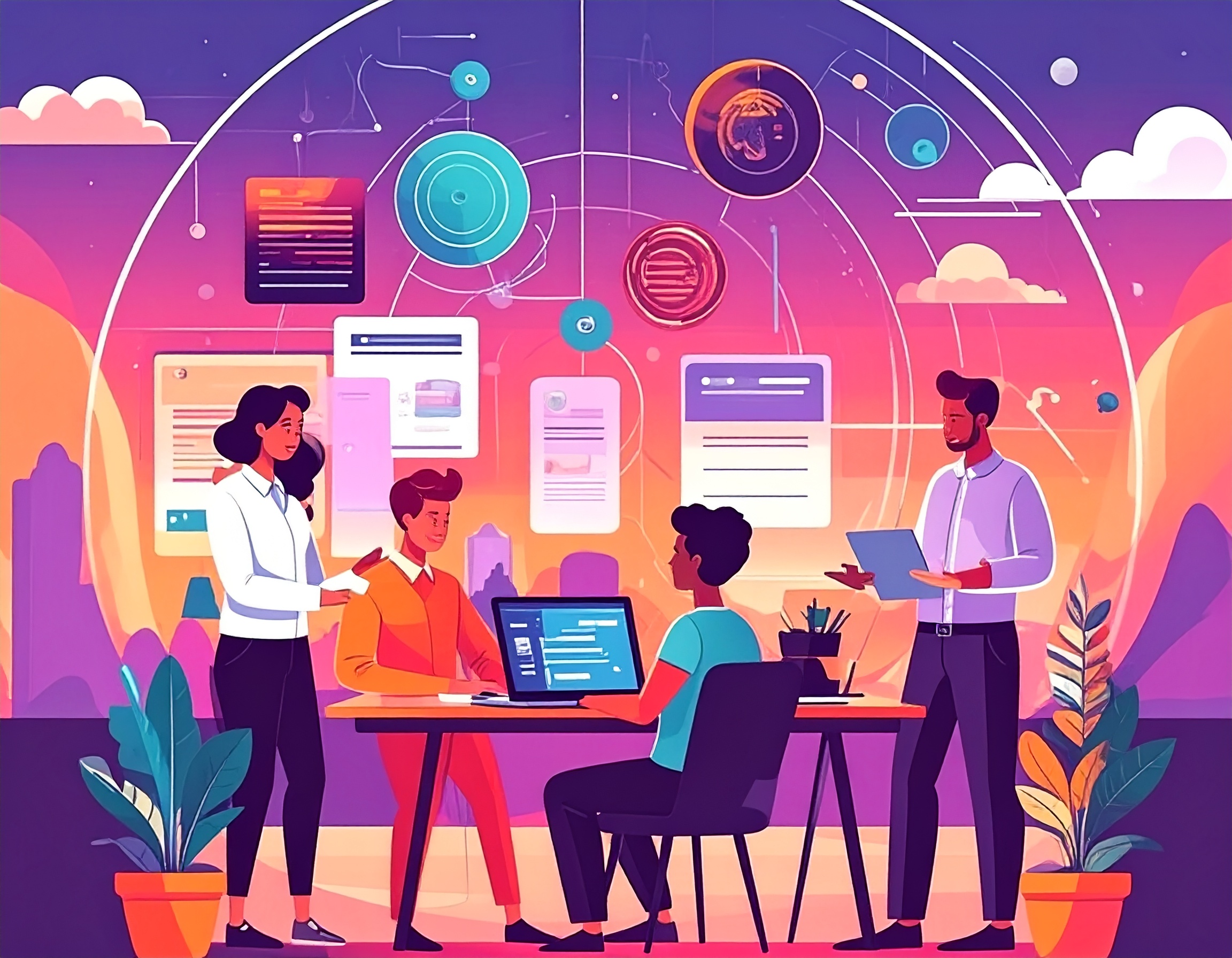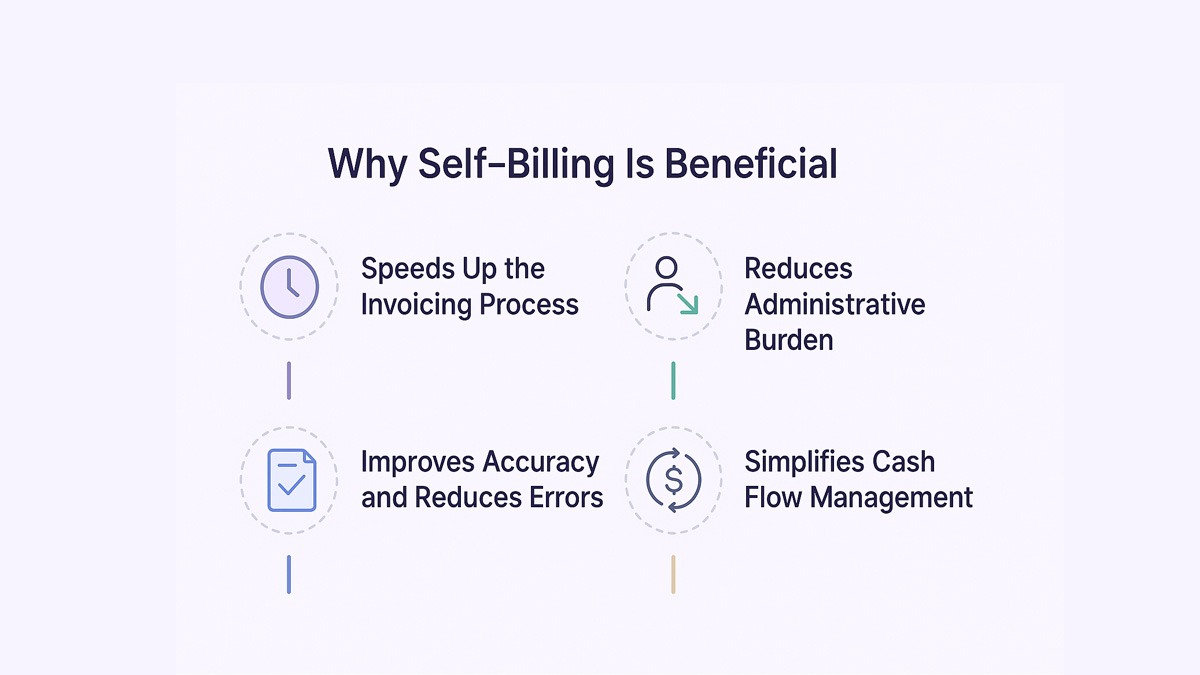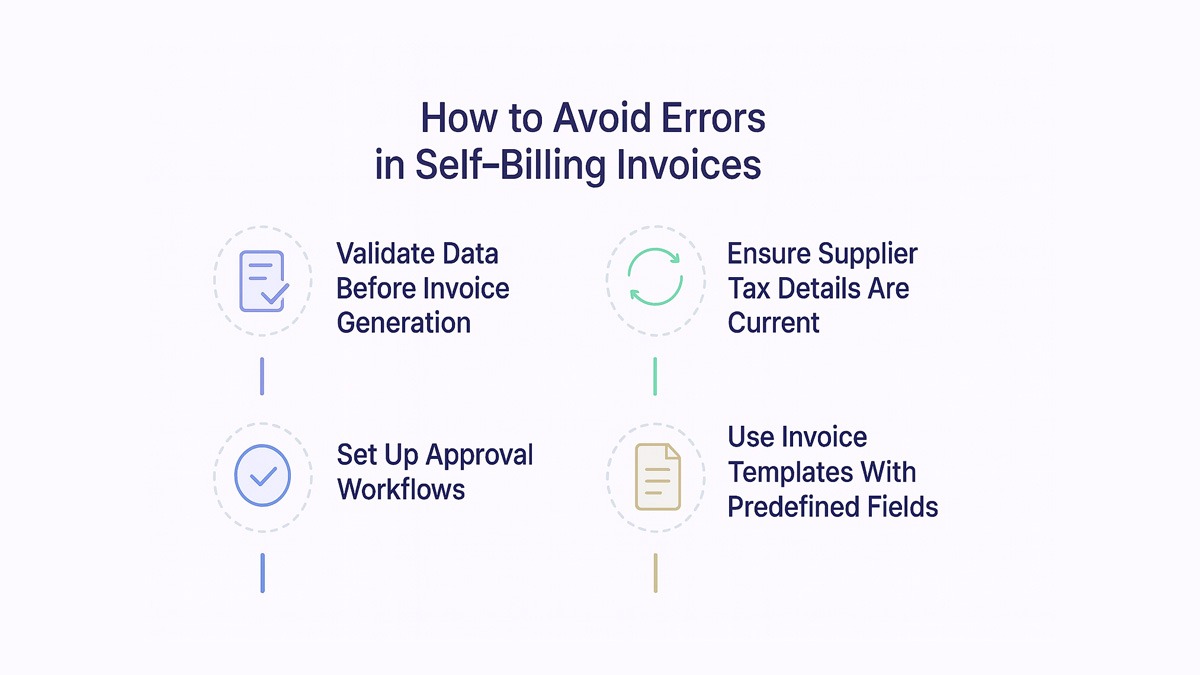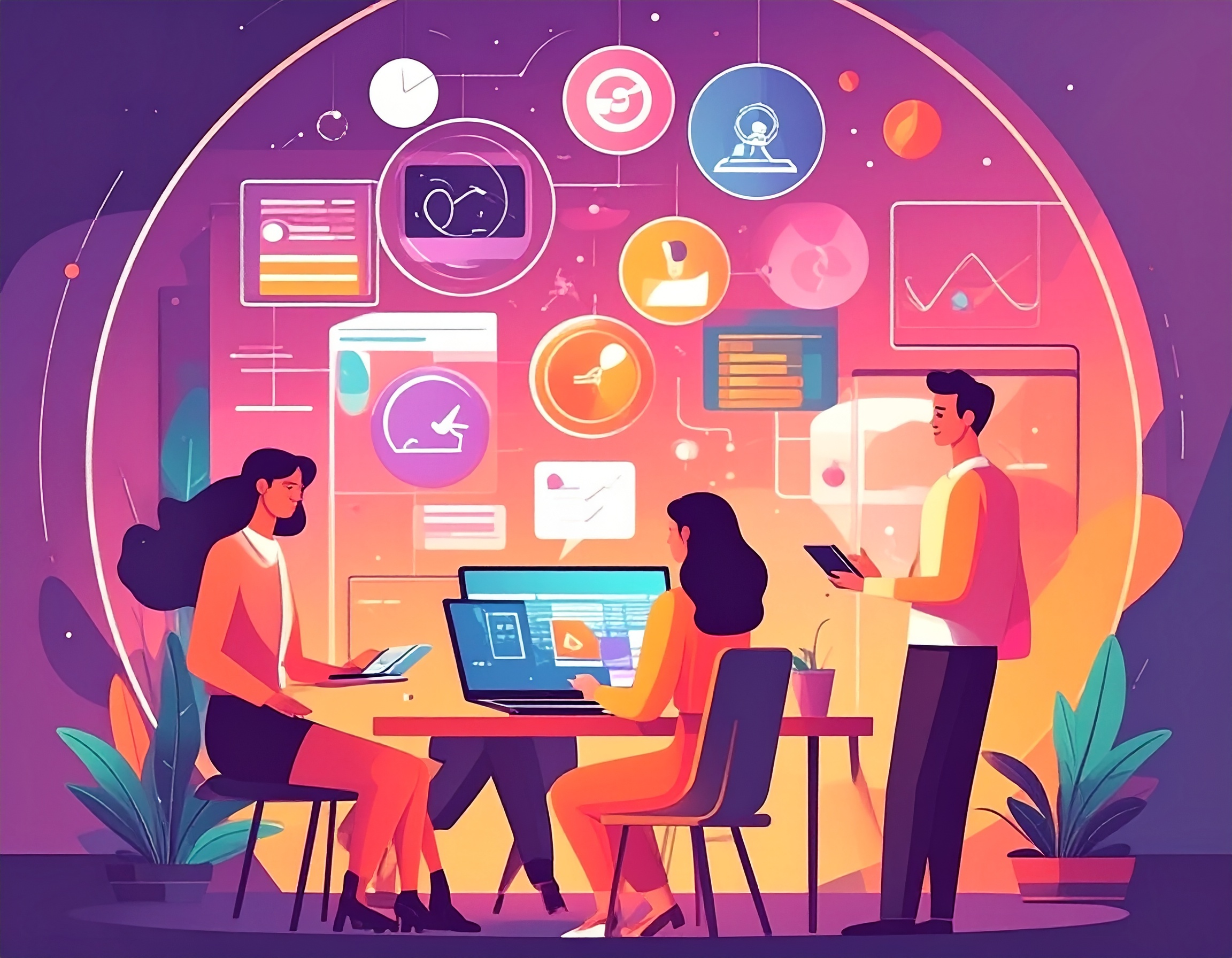

Why Self-Billing Is Reshaping Procurement: Faster Payments, Fewer Errors, More Control

Why Self-Billing Is Reshaping Procurement: Faster Payments, Fewer Errors, More Control
Explore how self-billing improves invoicing speed, accuracy, and compliance for modern AP teams.


In traditional invoicing, suppliers send bills and buyers pay them - straightforward, right? But what if buyers flipped the process and issued the invoice themselves? That’s the core of self-billing, a practice gaining traction in industries seeking faster payments, fewer errors, and smoother procurement. If you deal with high volumes of recurring transactions, understanding self-billing could be a game-changer.
What this blog covers:
- What is self-billing
- Who can issue self-billing invoices
- Why self-billing is beneficial
- Understanding tax and VAT in self-billing
- Compliance steps for suppliers in self-billing
- Rules and best practices for implementing self-billing
- How to avoid errors in self-billing invoices
- How Spendflo helps streamline self-billing and AP workflows
- Frequently asked questions on self billing
What is Self-Billing?
Self-billing is a financial arrangement where the buyer, instead of the supplier, generates the invoice for goods or services received. This reverse invoicing method simplifies accounts payable, reduces back-and-forth, and ensures faster, more accurate payment cycles.
Who Can Issue Self-Billing Invoices?
Not every business can jump into self-billing - but for the right setup, it works beautifully. Typically, buyers with recurring transactions or long-term supplier relationships use self-billing. Think of large retailers, manufacturers, or procurement-heavy companies who value speed and accuracy. Self-billing works especially well in fast-moving supply chain environments. The key is mutual agreement. Both buyer and supplier must sign a formal contract acknowledging the process. Once in place, the buyer takes on the responsibility of generating and sending invoices, while the supplier agrees not to issue duplicate invoices.
Why Self-Billing Is Beneficial
Self-billing isn’t just about flipping the script on invoicing - it’s about control, efficiency, and trust. When implemented well, it brings tangible benefits to both buyers and suppliers.

Speeds Up the Invoicing Process
With self-billing, there’s no waiting on the supplier to create and send an invoice. The buyer generates the invoice the moment goods or services are delivered. This means less lag time, faster processing, and more predictable cash flow on both sides.
Reduces Administrative Burden
For suppliers, it’s a weight off their shoulders. No need to draft, review, and send invoices - it’s handled by the buyer. This frees up finance teams to focus on higher-value tasks rather than chasing invoices or correcting basic errors.
Improves Accuracy and Reduces Errors
Since the buyer has control over order data, quantities, and pricing, invoices are less prone to mismatches. Controlled invoicing reduces uncertainties in estimating long-term benefit costs. This minimizes disputes and ensures the payment aligns with agreed terms, which in turn reduces reconciliation efforts.
Simplifies Cash Flow Management
Predictable invoicing leads to predictable payments. Suppliers know when they’ll be paid, and buyers can manage their outflows with better precision. This also helps forecast benefit expenses more accurately. This kind of visibility strengthens financial planning for both parties involved. It's especially valuable in industries like health insurance where predictability matters.
Understanding Tax and VAT in Self-Billing
Self-billing doesn’t skip the tax man. In fact, it comes with its own compliance responsibilities. The buyer, now issuing invoices, must ensure they include accurate VAT or sales tax details. This includes tax identification numbers, applicable rates, and invoice sequencing. Businesses must also report the correct output tax for each transaction. In many jurisdictions, tax authorities require a self-billing agreement between both parties to legitimize the process. If not handled correctly, errors in VAT treatment can lead to penalties - making compliance a non-negotiable part of self-billing setups. Accurate reporting of input tax is equally critical for compliance.
Compliance Steps for Suppliers in Self-Billing
For suppliers, agreeing to a self-billing arrangement means more than just saying “yes.” There are clear responsibilities to stay compliant - both with internal policies and tax regulations. Here’s what suppliers need to do to keep things above board.
Sign a Formal Self-Billing Agreement
Before anything begins, the supplier must enter into a legally binding self-billing agreement with the buyer. This document outlines responsibilities, invoice format, validity period, and tax obligations - and it’s often required for VAT compliance. Each self-billing document should be stored securely for regulatory checks.
Avoid Issuing Invoices
Once the agreement is in place, suppliers must not issue their own invoices for the same transactions. Doing so could create duplicates and compliance risks. The buyer becomes the sole issuer of invoices, and this must be respected throughout the contract.
Review Buyer-Issued Invoices Regularly
Suppliers should actively review the self-billed invoices for accuracy. Any discrepancies in pricing, quantities, or tax calculations must be flagged quickly to avoid future reconciliation issues or financial losses.
Update Tax Information Promptly
Changes in VAT registration, business addresses, or legal entity names should be communicated to the buyer without delay. Keeping tax details up to date ensures invoices remain valid and compliant with local laws.
Rules and Best Practices for Implementing Self-Billing
Self-billing can unlock serious efficiency, but only if it’s set up with structure and care. Here are some key rules and best practices to follow to make the process smooth, compliant, and beneficial for everyone involved.
Ensure Mutual Agreement and Documentation
Start with clear alignment. Both parties must agree in writing to a self-billing arrangement. This includes outlining responsibilities, the validity period of the agreement, invoicing formats, and the process for dispute resolution.
Use Consistent Invoice Numbering and Formats
To stay audit-ready, self-billed invoices must follow a consistent format and numbering system. This helps ensure traceability, avoid duplication, and makes it easier for both internal teams and regulators to validate records.
Implement Clear Internal Workflows
Assign roles for who creates, approves, and sends self-billed invoices. Integrate your finance systems to automate wherever possible. A well-defined workflow minimizes human error and keeps processes moving efficiently. This ensures a transparent audit trail for every invoice action.
Review Agreements Periodically
Don’t “set and forget.” Self-billing agreements should be reviewed annually or when business terms change. This ensures the process stays relevant and compliant with evolving tax laws and organizational structures.
How to Avoid Errors in Self-Billing Invoices
Even small mistakes in self-billing can snowball into payment delays or tax troubles. Here’s how to stay ahead of common errors and keep your invoicing process clean and reliable.

Validate Data Before Invoice Generation
Use system checks to confirm quantities, rates, and tax details match the purchase order and delivery records. Ensure that each invoice reflects the latest Currency Rate used. Automated validations help catch issues before they hit the supplier’s inbox. Avoid adding large attachments or media downloads to reduce delays.
Ensure Supplier Tax Details Are Current
Outdated or incorrect tax IDs, addresses, or VAT numbers can render an invoice non-compliant. Always confirm supplier details are up to date in your system.
Set Up Approval Workflows
Even with automation, human oversight is key. Have a review process in place before invoices are finalized and sent - especially for high-value or complex transactions.
Use Invoice Templates With Predefined Fields
Standardized invoice templates reduce formatting inconsistencies and make it easier to populate accurate data - minimizing errors across large volumes.
How Spendflo Helps Streamline Self-Billing and AP Workflows
Spendflo simplifies the chaos of self-billing by bringing structure, automation, and visibility into your accounts payable process. With centralized invoice management, automated approval flows, and real-time vendor data, teams can reduce manual effort and avoid costly errors. Whether you’re scaling procurement or handling recurring contracts, Spendflo ensures that invoices are generated accurately and on time - keeping both compliance and cash flow in check while freeing up your finance team to focus on strategic tasks.
Frequently Asked Questions on Self Billing
What are the risks of using self-billing?
The main risks include issuing duplicate invoices, incorrect tax reporting, and compliance violations if agreements aren’t properly documented or updated.
Can any buyer issue a self-billing invoice?
No, buyers can only issue self-billing invoices if there’s a mutual agreement in place and the supplier has accepted the terms. It’s not a one-sided decision.
Is self-billing legal across all countries?
Not always. Some countries allow self-billing under strict regulations, while others may prohibit or limit it. Always check local tax laws before implementing.
How does automation help reduce errors in self-billing?
Automation ensures data accuracy by syncing purchase orders, delivery records, and tax info - significantly reducing manual input, which is often where errors creep in.
How does self-billing support better financial management and data accuracy?
Self-billing enables tighter control over financial management by centralizing invoice creation and approval. It integrates directly with the General Ledger and invoice consolidation systems while improving data security through role-based access and automated workflows.
What role do payment terms and Self-Bill Compilation services play in self-billing?
Payment terms become easier to enforce when buyers control the invoicing process. Self-Bill Compilation services help manage recurring transactions at scale, ensuring every document is accurate, compliant, and audit-ready.










.png)




.png)










.avif)





